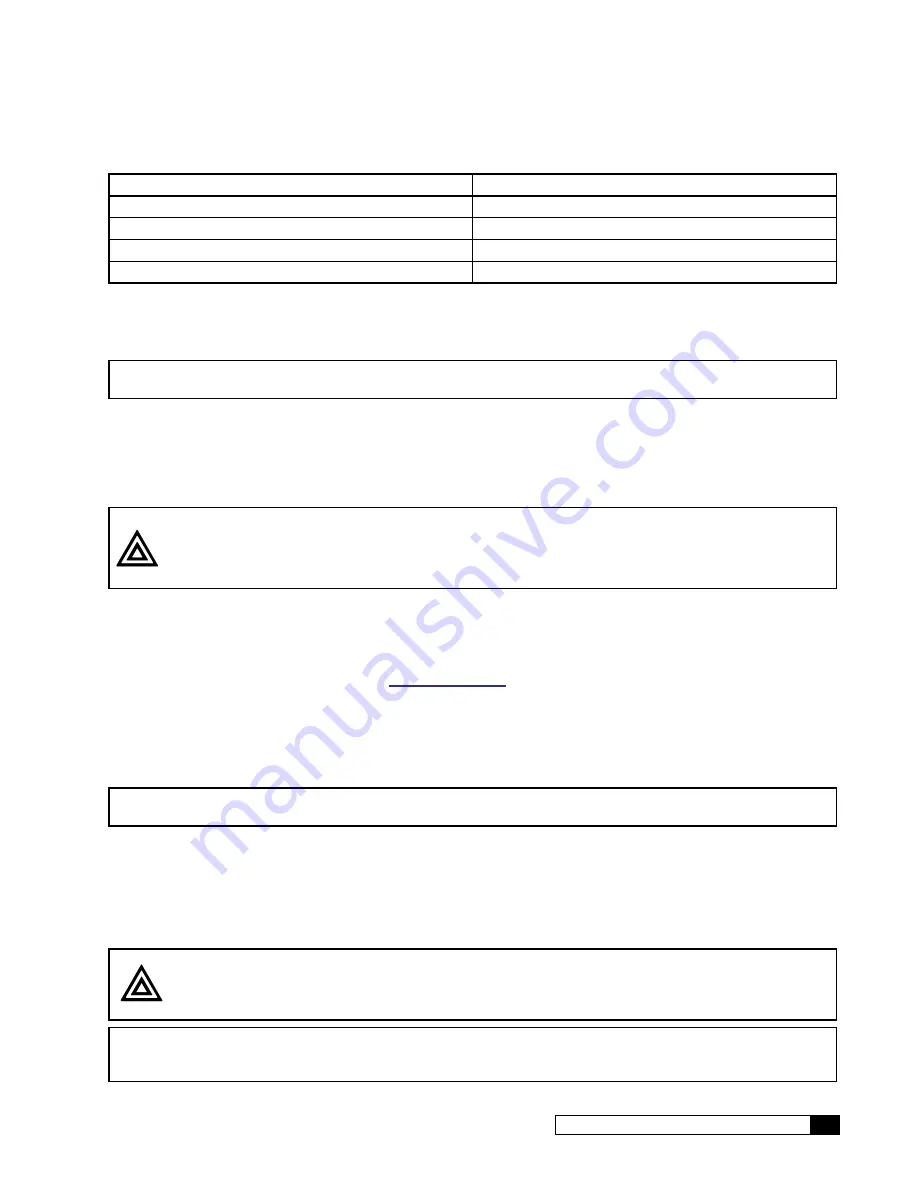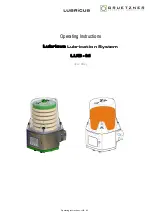
Service and Maintenance
67
Cat. No. 01023095
Once the foulant has been identified, choose the recommended cleaning chemical(s) from Table 9.
Membrane Problem
Cleaning Chemical
Hardness Scale
Hydrochloric acid, phosphoric acid
Iron
Hydrochloric acid, phosphoric acid
Silt
Phosphoric acid and sodium hydroxide
Biofouling
Phosphoric acid and sodium hydroxide
Table 9. Recommended membrane cleaning chemicals.
Because phosphoric acid can be used by itself or in combination with sodium hydroxide to clean almost all types of fou-
lants, it is generally recommended over hydrochloric acid when choosing a “stock” acid.
NOTICE
Some municipal surface water supplies are treated with alum. Aluminum fouling results in low flow
and, occasionally, in low rejection. If aluminum fouling is suspected, use only hydrochloric acid.
Use a pH meter to prepare acid and caustic solutions, and to monitor pH changes as the solutions react with any foulants.
Materials required:
1. Solution tank (50 gallon capacity, minimum), to prepare and store the chemical solution.
2. Tank stand, to elevate solution tank to level above pump.
CAUTION! The bottom of the tank must be higher than the pump on the RO unit to prevent cavita-
tion of the pump when solution is drawn from the tank.
3. Tubing 1/2” O.D. to connect cleaning adapter ahead of Pre-filter.
4. A pH meter.
5. A pre-filter cartridge (P/N 00955004).
Before proceeding record the “NOW” values in
Prepare the Equipment for Cleaning
1. Choose GO TO OFFLINE from the main menu.
2. Place the solution tank on the tank stand. Connect the tubing to the cleaning adapter then place the other end
of the tubing at the bottom of the solution tank.
NOTICE
The tubing length should be as short as possible to prevent excessive pressure drop. Cut the tub-
ing as required to minimize the length.
3. Remove the product tubing from the service connection and place the end in the solution tank. The concentrate
tubing should still be directed to drain.
4. Replace the Pre-filter cartridge.
5. Choose GO TO RUNNING from the main menu.
6. Fill the tank with 30-40 gallons of RO product water.
CAUTION! DO NOT turn on the RO system unless water can flow from the product and waste
lines.
NOTE Soft water is an acceptable substitute for RO water. When the solution tank is filled, direct the product
tubing to drain. Next, open the pump system pressure control valve until the system pressure is ap-
proximately 50 psig.
















































